Inotropic agents and vasodilator strategies for the treatment of cardiogenic shock or low cardiac output syndrome
- PMID: 33152122
- PMCID: PMC8094388
- DOI: 10.1002/14651858.CD009669.pub4
Inotropic agents and vasodilator strategies for the treatment of cardiogenic shock or low cardiac output syndrome
Abstract
Background: Cardiogenic shock (CS) and low cardiac output syndrome (LCOS) are potentially life-threatening complications of acute myocardial infarction (AMI), heart failure (HF) or cardiac surgery. While there is solid evidence for the treatment of other cardiovascular diseases of acute onset, treatment strategies in haemodynamic instability due to CS and LCOS remains less robustly supported by the given scientific literature. Therefore, we have analysed the current body of evidence for the treatment of CS or LCOS with inotropic and/or vasodilating agents. This is the second update of a Cochrane review originally published in 2014.
Objectives: Assessment of efficacy and safety of cardiac care with positive inotropic agents and vasodilator agents in CS or LCOS due to AMI, HF or after cardiac surgery.
Search methods: We conducted a search in CENTRAL, MEDLINE, Embase and CPCI-S Web of Science in October 2019. We also searched four registers of ongoing trials and scanned reference lists and contacted experts in the field to obtain further information. No language restrictions were applied.
Selection criteria: Randomised controlled trials (RCTs) enrolling patients with AMI, HF or cardiac surgery complicated by CS or LCOS.
Data collection and analysis: We used standard methodological procedures according to Cochrane standards.
Main results: We identified 19 eligible studies including 2385 individuals (mean or median age range 56 to 73 years) and three ongoing studies. We categorised studies into 11 comparisons, all against standard cardiac care and additional other drugs or placebo. These comparisons investigated the efficacy of levosimendan versus dobutamine, enoximone or placebo; enoximone versus dobutamine, piroximone or epinephrine-nitroglycerine; epinephrine versus norepinephrine or norepinephrine-dobutamine; dopexamine versus dopamine; milrinone versus dobutamine and dopamine-milrinone versus dopamine-dobutamine. All trials were published in peer-reviewed journals, and analyses were done by the intention-to-treat (ITT) principle. Eighteen of 19 trials were small with only a few included participants. An acknowledgement of funding by the pharmaceutical industry or missing conflict of interest statements occurred in nine of 19 trials. In general, confidence in the results of analysed studies was reduced due to relevant study limitations (risk of bias), imprecision or indirectness. Domains of concern, which showed a high risk in more than 50% of included studies, encompassed performance bias (blinding of participants and personnel) and bias affecting the quality of evidence on adverse events. All comparisons revealed uncertainty on the effect of inotropic/vasodilating drugs on all-cause mortality with a low to very low quality of evidence. In detail, the findings were: levosimendan versus dobutamine (short-term mortality: RR 0.60, 95% CI 0.36 to 1.03; participants = 1701; low-quality evidence; long-term mortality: RR 0.84, 95% CI 0.63 to 1.13; participants = 1591; low-quality evidence); levosimendan versus placebo (short-term mortality: no data available; long-term mortality: RR 0.55, 95% CI 0.16 to 1.90; participants = 55; very low-quality evidence); levosimendan versus enoximone (short-term mortality: RR 0.50, 0.22 to 1.14; participants = 32; very low-quality evidence; long-term mortality: no data available); epinephrine versus norepinephrine-dobutamine (short-term mortality: RR 1.25; 95% CI 0.41 to 3.77; participants = 30; very low-quality evidence; long-term mortality: no data available); dopexamine versus dopamine (short-term mortality: no deaths in either intervention arm; participants = 70; very low-quality evidence; long-term mortality: no data available); enoximone versus dobutamine (short-term mortality RR 0.21; 95% CI 0.01 to 4.11; participants = 27; very low-quality evidence; long-term mortality: no data available); epinephrine versus norepinephrine (short-term mortality: RR 1.81, 0.89 to 3.68; participants = 57; very low-quality evidence; long-term mortality: no data available); and dopamine-milrinone versus dopamine-dobutamine (short-term mortality: RR 1.0, 95% CI 0.34 to 2.93; participants = 20; very low-quality evidence; long-term mortality: no data available). No information regarding all-cause mortality were available for the comparisons milrinone versus dobutamine, enoximone versus piroximone and enoximone versus epinephrine-nitroglycerine.
Authors' conclusions: At present, there are no convincing data supporting any specific inotropic or vasodilating therapy to reduce mortality in haemodynamically unstable patients with CS or LCOS. Considering the limited evidence derived from the present data due to a high risk of bias and imprecision, it should be emphasised that there is an unmet need for large-scale, well-designed randomised trials on this topic to close the gap between daily practice in critical care of cardiovascular patients and the available evidence. In light of the uncertainties in the field, partially due to the underlying methodological flaws in existing studies, future RCTs should be carefully designed to potentially overcome given limitations and ultimately define the role of inotropic agents and vasodilator strategies in CS and LCOS.
Copyright © 2020 The Cochrane Collaboration. Published by John Wiley & Sons, Ltd.
Conflict of interest statement
Figures
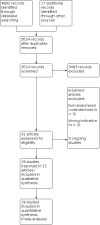
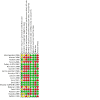
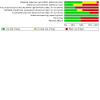
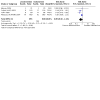
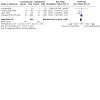
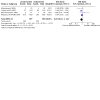
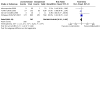


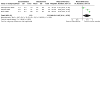
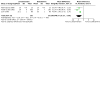
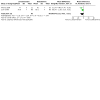
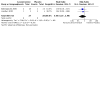
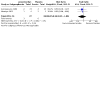
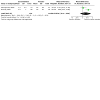
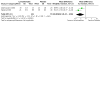
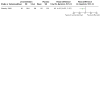
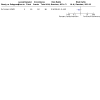
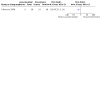
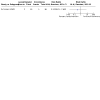
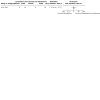
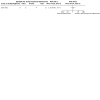
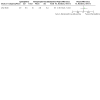
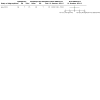
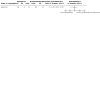
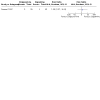
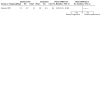
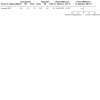
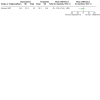
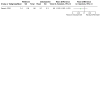
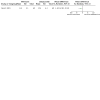
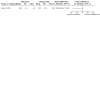
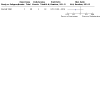
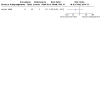
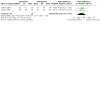
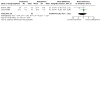
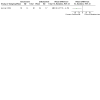
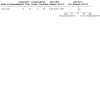
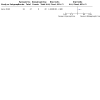
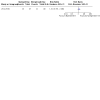
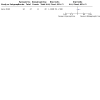
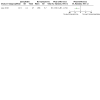
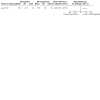
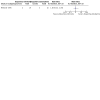
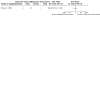

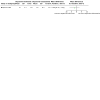
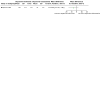
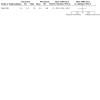
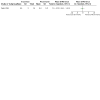
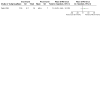
Update of
-
Inotropic agents and vasodilator strategies for the treatment of cardiogenic shock or low cardiac output syndrome.Cochrane Database Syst Rev. 2018 Jan 29;1(1):CD009669. doi: 10.1002/14651858.CD009669.pub3. Cochrane Database Syst Rev. 2018. Update in: Cochrane Database Syst Rev. 2020 Nov 5;11:CD009669. doi: 10.1002/14651858.CD009669.pub4. PMID: 29376560 Free PMC article. Updated.
References
References to studies included in this review
Adamopoulos 2006 {published data only}
-
- Adamopoulos S, Parissis JT, Iliodromitis EK, Paraskevaidis I, Tsiapras D, Farmakis D, et al. Effects of levosimendan versus dobutamine on inflammatory and apoptotic pathways in acutely decompensated chronic heart failure. American Journal of Cardiology 2006;98:102-6. - PubMed
Alvarez 2006 {published data only}
-
- Alvarez J, Bouzada M, Fernandez AL, Caruezo V, Taboada M, Rodriguez J, et al. Hemodynamic effects of levosimendan in patients with low cardiac output after cardiac surgery. Revista Espanola de Cardiologia 2006;59(4):338-45. - PubMed
Atallah 1990 {published data only}
-
- Atallah G, George M, Lehot JJ, Bastien O, Bejuit R, Durand PG, et al. Arrhythmia in patients with low cardiac output after valvular surgery. Randomized, double-blind comparative study of dobutamine versus enoximone [Arythmies chez les patients en bas debit cardiaque apres chirugie valvulaire]. Archives des Maladies du Coeur et des Vaisseaux 1990;83(3):63-8. - PubMed
-
- George M, Atallah G, Lehot JJ, Bastien O, Durand PG, Estanove S. Comparison of the hemodynamic effects of dobutamine and enoximone in the treatment of low cardiac output after valvular surgery. Antagonistes de L'angiotensine II: une Voie Prometteuse 1990;83(Spec 3):57-62. - PubMed
Feneck 2001 {published data only}
-
- Feneck RO, Sherry KM, Withington PS, Oduro-Dominah A, European Milrinone Multicenter Trial Group. Comparison of the hemodynamic effects of milrinone with dobutamine in patients after cardiac surgery. Journal of Cardiothoracic and Vascular Anesthesia 2001;15(3):306-15. - PubMed
Follath (LIDO) 2002 {published data only}
-
- Follath F, Cleland JG, Just H, Papp JG, Scholz H, Peuhkurinen K, et al. Efficacy and safety of intravenous levosimendan compared with dobutamine in severe low-output heart failure (the LIDO study): a randomised double-blind trial. Lancet 2002;360:196-202. - PubMed
Fuhrmann 2008 {published data only}
Galinier 1990 {published data only}
-
- Galinier M, Rochiccioli JP, Edouard P, Fourcade J, Massabuau P, Puel J, et al. A comparison of enoxime and dobutamine in severe chronic congestive cardiac failure with low cardiac output. Antagonistes de L'angiotensine II: une Voie Prometteuse 1990;83(SPEC 3):27-32. - PubMed
Garcίa‐González 2006 {published data only}
-
- García-González MJ, Dominguez-Rodríguez A, Ferrer-Hita JJ, Abreu-González P, Muňoz MB. Cardiogenic shock after primary percutaneous coronary intervention: effects of levosimendan compared with dobutamine on haemodynamics. European Journal of Heart Failure 2006;8:723-8. [DOI: 10.1016/j.ejheart.2006.01.007] - DOI - PubMed
-
- Samini-Fard S, García-González MJ, Domínguez-Rodríguez A, Abreu-González P. Effects of levosimendan versus dobutamine on long-term survival of patients with cardiogenic shock after primary coronary angioplasty. International Journal of Cardiology 2008;127:284-7. [DOI: 10.1016/j.ijcard.2007.04.143] - DOI - PubMed
Husebye 2013 {published and unpublished data}
-
- Husebye T, Eritsland J, Muller C, Sandvik L, Arnesen H, Seljeflot I, et al. Levosimendan in acute heart failure following primary percutaneous coronary intervention-treated acute ST-elevation myocardial infarction. Results from the LEAF trial: a randomized, placebo-controlled study. European Journal of Heart Failure 2013;15(5):565-72. [DOI: 10.1093/eurjhf/hfs215] - DOI - PubMed
Lancon 1990 {published data only}
-
- Lancon JP, Caillard B, Volot F, Obadia JF, Bock F. Comparison of enoximone versus tobutamine in the treatment of low cardiac output after cardiac surgery [Comparaison de l'enoximone et de la dobutamine dans le traitement du bas debit cardiaque apres chirurgie cardiaque]. Annales Francaises d'Anesthesie et de Animation 1990;9(3):289-94. - PubMed
Levin 2008 {published data only}
-
- Levin RL, Degrange MA, Porcile R, Salvagio F, Blanco N, Botbol AL, et al. The calcium sensitizer levosimendan gives superior results to dobutamine in postoperative low cardiac output syndrome [Superioridad del sensibilizante al calcio levosimendan comparado con dobutamina en el sindrome de bajo gasto cardiaco postoperatorio]. Revista Espaňola de Cardiología 2008;61(5):471-9. - PubMed
Levy 2011 {published data only}
-
- Levy B, Perez P, Perny J, Thivilier C, Gerard A. Comparison of norepinephrine-dobutamine to epinephrine for hemodynamics, lactate metabolism, and organ function variables in cardiogenic shock. A prospective, randomized pilot study. Critical Care Medicine 2011;39(3):450-5. [DOI: 10.1097/CCM.0b013e3181ffe0eb] - DOI - PubMed
Levy 2018 {published data only}
-
- Levy B, Clere-Jehl R, Legras A, Morichau-Beauchant T, Leone M, Frederique G, et al. Epinephrine versus norepinephrine for cardiogenic shock after acute myocardial infarction. Journal of the American College of Cardiology 2018;72(2):173-82. - PubMed
-
- Levy B, Meziani F, Leone M, Guiot P, Quenot JP, Louis G, et al. CO-65 Comparison of epinephrine and norepinephrine for the treatment of cardiogenic shock following acute myocardial infarction. OPTIMA CC study. Annals of Intensive Care 2018;8(Suppl 1):13.
Mebazaa (SURVIVE) 2007 {published data only}
-
- Mebazaa A, Nieminen MS, Packer M, Cohen-Solal A, Kleber FX, Pocock SJ, et al. Levosimendan vs dobutamine for patients with acute decompensated heart failure: the SURVIVE randomized trial. JAMA 2007;297(17):1883-91. - PubMed
Meissner 1996 {published data only}
-
- Meissner A, Schmelzle T, Simon R. Differential therapy of cardiogenic shock with dopamine/milrinone in comparison with dopamine/dobutamine [Differentialtherapie des kardiogenen Schocks mit Dopamin/Milrinon im Vergleich zu Dopamin/Dobutamin]. Zeitschrift fur Kardiologie 1996;85(11):839-46. - PubMed
Patel 1993 {published data only}
-
- Patel A, Caldicott LD, Skoyles JR, Das P, Sherry KM. Comparison of the haemodynamic effects of enoximone and piroximone in patients after cardiac surgery. British Journal of Anaesthesia 1993;71(6):869-72. - PubMed
Rosseel 1997 {published data only}
-
- Rosseel PM, Santman FW, Bouter H, Dott CS. Postcardiac surgery low cardiac output syndrome: dopexamine or dopamine? Intensive Care Medicine 1997;23:962-8. - PubMed
Slawsky 2000 {published data only}
-
- Slawsky MT, Colucci WS, Gottlieb SS, Greenberg BH, Haeusslein E, Hare J, et al. Acute hemodynamic and clinical effects of levosimendan in patients with severe heart failure. Circulation 2000;102(18):2222-7. - PubMed
Zwölfer 1995 {published data only}
-
- Zwolfer W, Dressler HT, Keznickl P, Dieterich HA. Enoximone versus epinephrine/nitroglycerin in cardiac low-output states following valve replacement. Clinical Cardiology 1995;18(3):145-9. - PubMed
References to studies excluded from this review
Al‐Shawaf 2006 {published data only}
-
- Al-Shawaf E, Ayed A, Vislocky I, Radomir B, Dehrab N, Tarazi R. Levosimendan or milrinone in the type 2 diabetes patient with low ejection fraction undergoing elective coronary artery surgery. Journal of Cardiothoracic and Vascular Anesthesia 2006;20:353-7. - PubMed
Dupuis 1992 {published data only}
-
- Dupuis JY, Bondy R, Cattran C, Nathan HJ, Wynands JE. Amrinone and dobutamine as primary treatment of low cardiac output syndrome following coronary artery surgery. Journal of Cardiothoracic and Vascular Anesthesia 1992;6(5):542-53. - PubMed
El Mokhtari 2007 {published data only}
-
- El Mokhtari Nour Eddine, Arlt A, Meissner A, Lins M. Inotropic therapy for cardiac low output syndrome. European Journal of Medical Research 2007;12(11):563-7. - PubMed
Pomer 1986 {published data only}
-
- Pomer S, Elert O, Sarai K, Satter P. Comparative effects of combined dopamine and nitroprusside versus dobutamine and nitroprusside infusions for computer-controlled management of low-output cardiac failure after open heart surgery. International Journal of Clinical Pharmacology, Therapy, and Toxicology 1986;24(2):77-81. - PubMed
Rychter 1985 {published data only}
-
- Rychter J, Iwaszkiewicz A, Golanski R, Rybinski L, Kesiak J, Tomaszewska L. Nitroglycerin and dobutamine in the treatment of low cardiac output syndrome after direct myocardial revascularization. Wplyw Glukagonu na Uklad Krazenia 1985;40(5):135-7. - PubMed
Seino 1996 {published data only}
-
- Seino Y, Momomura S, Takano T, Hayakawa H, Katoh K, Japan Intravenous Milrinone Investigators. Multicenter, double-blind study of intravenous milrinone for patients with acute heart failure in Japan. Intensive Care Medicine 1996;24(9):1490-7. - PubMed
References to ongoing studies
NCT03207165 {published data only}
-
- NCT03207165. Milrinone versus dobutamine in critically ill patients. clinicaltrials.gov/show/NCT03207165 (first received 2 July 2017).
NCT03340779 {published data only}
-
- NCT03340779. Norepinephrine vs norepinephrine and dobutamine in cardiogenic shock. clinicaltrials.gov/show/NCT03340779 (first received 14 November 2017).
NCT04020263 {published data only}
-
- NCT04020263. Effect of early use of levosimendan versus placebo on top of a conventional strategy of inotrope use on a combined morbidity-mortality endpoint in patients with cardiogenic shock. clinicaltrials.gov/show/NCT04020263 (first received 16 July 2019).
Additional references
Alexander 2001
-
- Alexander RW, Pratt CM, Ryan TJ, Roberts R. Diagnosis and management of patients with acute myocardial infarction. In: Fuster V, Alexander RW, O’Rourke RA, editors(s). Hurst’s The Heart. 10th edition. New York: McGraw-Hill Company, 2001:1275–359.
Balshem 2011
-
- Balshem H, Helfand M, Schünemann HJ, Oxman AD, Kunz R, Brozek J, et al. GRADE guidelines: 3. Rating the quality of evidence. Journal of Clinical Epidemiology 2011;64(4):401-6. - PubMed
Belletti 2015
-
- Belletti A, Castro ML, Silvetti S, Greco T, Biondi-Zoccai G, Pasin L, et al. The effect of inotropes and vasopressors on mortality. British Journal of Anaesthesia 2015;115(5):656-75. - PubMed
Benjamin 2019
-
- Benjamin EJ, Muntner P, Alonso A, Bittencourt MS, Callaway CW, Carson AP, et al. Heart disease and stroke statistics: 2019 update: a report from the American Heart Association. Circulation 2019;139(10):E56-E528. - PubMed
CDC 2019
-
- Centers for Disease Control and Prevention. Heart Disease and Stroke Prevention. www.cdc.gov/chronicdisease/resources/publications/aag.htm (accessed 23 December 2019).
Chioncel 2020
-
- Chioncel O, Parissis J, Mebazaa A, Thiele H, Desch S, Bauersachs J, et al. Epidemiology, pathophysiology and contemporary management of cardiogenic shock - a position statement from the Heart Failure Association (HFA) of the European Society of Cardiology (ESC). European Journal of Heart Failure 2020;22(8):1315-41. [DOI: 10.1002/ejhf.1922] - DOI - PubMed
Cholley 2019
Delaney 2010
-
- Delaney A, Bradford C, McCaffrey J, Bagshaw SM, Lee R. Levosimendan for the treatment of acute severe heart failure: a meta-analysis of randomised controlled trials. International Journal of Cardiology 2010;138:281-9. - PubMed
De Luca 2004
-
- De Luca G, Suryapranata H, Ottervanger JP, Antman EM. Time delay to treatment and mortality in primary angioplasty for acute myocardial infarction - every minute of delay counts. Circulation 2004;109(10):1223–5. - PubMed
De Luca 2015
-
- De Luca L, Olivari Z, Farina A, Gonzini L, Lucci D, Di Chiara A, et al. Temporal trends in the epidemiology, management, and outcome of patients with cardiogenic shock complicating acute coronary syndromes. European Journal of Heart Failure 2015;17(11):1124-32. - PubMed
Den Uil 2009a
-
- Den Uil CA, Caliskan K, Lagrand WK, Van der Ent M, Jewbali LS, Van Kuijk JP, et al. Dose-dependent benefit of nitroglycerin on microcirculation of patients with severe heart failure. Intensive Care Medicine 2009;35(11):1893-9. - PubMed
Den Uil 2009b
-
- Den Uil CA, Lagrand WK, Van der Ent M, Nieman K, Struijs A, Jewbali LSD, et al. Conventional hemodynamic resuscitation may fail to optimize tissue perfusion: an observational study on the effects of dobutamine, enoximone, and norepinephrine in patients with acute myocardial infarction complicated by cardiogenic shock. PLOS One 2014;9(8):e103978. - PMC - PubMed
Den Uil 2019
-
- Den Uil CA, Van Mieghem NM, Bastos MB, Jewbali LS, Lenzen MJ, Engstrom AE, et al. Primary intra-aortic balloon support versus inotropes for decompensated heart failure and low output: a randomised trial. EuroIntervention 2019;15(7):586-93. - PubMed
Elbadawi 2019
-
- Elbadawi A, Elgendy IY, Mahmoud K, Barakat AF, Mentias A, Mohamed AH, et al. Temporal trends and outcomes of mechanical complications in patients with acute myocardial infarction. Journal of the American College of Cardiology, Cardiovascular Interventions 2019;12(18):1825–36. - PubMed
Fang 2018
-
- Fang M, Cao H, Wang Z. Levosimendan in patients with cardiogenic shock complicating myocardial infarction. Medicina Intensiva 2018;42(7):409-15. - PubMed
Gamper 2016
GRADEpro GDT 2015 [Computer program]
-
- GRADEpro GDT. Hamilton (ON): McMaster University (developed by Evidence Prime), 2015. Available at gradepro.org.
Guyatt 2011a
-
- Guyatt G, Oxman AD, Akl E, Kunz R, Vist G, Brozek J, et al. GRADE guidelines: 1. Introduction - GRADE evidence profiles and summary of findings tables. Journal of Clinical Epidemiology 2011;64(4):383-94. - PubMed
Guyatt 2011b
-
- Guyatt GH, Oxman AD, Kunz R, Brozek J, Alonso-Coello P, Rind D, et al. GRADE guidelines 6. Rating the quality of evidence - imprecision. Journal of Clinical Epidemiology 2011;64(12):1283-93. - PubMed
Guyatt 2011c
-
- Guyatt GH, Oxman AD, Vist G, Kunz R, Brozek J, Alonso-Coello P, et al. GRADE guidelines: 4. Rating the quality of evidence - study limitations (risk of bias). Journal of Clinical Epidemiology 2011;64(4):407-15. - PubMed
Guyatt 2011d
-
- Guyatt GH, Oxman AD, Kunz R, Woodcock J, Brozek J, Helfand M, et al. GRADE guidelines: 7. Rating the quality of evidence - inconsistency. Journal of Clinical Epidemiology 2011;64(12):1294-302. - PubMed
Guyatt 2011e
-
- Guyatt GH, Oxman AD, Kunz R, Woodcock J, Brozek J, Helfand M, et al. GRADE guidelines: 8. Rating the quality of evidence - indirectness. Journal of Clinical Epidemiology 2011;64(12):1303-10. - PubMed
Guyatt 2011f
-
- Guyatt GH, Oxman AD, Montori V, Vist G, Kunz R, Brozek J, et al. GRADE guidelines: 5. Rating the quality of evidence - publication bias. Journal of Clinical Epidemiology 2011;64(12):1277-82. - PubMed
Guyatt 2013
-
- Guyatt GH, Oxman AD, Santesso N, Hefland M, Vist G, Kunz R, et al. GRADE guidelines: 12. Preparing summary of findings tables - binary outcomes. Journal of Clinical Epidemiology 2013;66(2):158-72. - PubMed
Harjola 2010
-
- Harjola VP, Costa S, Sund R, Ylikangas S, Siirilä-Waris K, Melin J, et al, FINN-AKVA Study Group. The type of acute heart failure and the costs of hospitalization. International Journal of Cardiology 2010;145(1):103-5. - PubMed
Harrison 2013
-
- Harrison RW, Hasselblad V, Mehta RH, Levin R, Harrington RA, Alexander JH. Effect of levosimendan on survival and adverse events after cardiac surgery: a meta-analysis. Journal of Cardiothoracic and Vascular Anesthesia 2013;27(6):1224-32. - PubMed
HFMA 2010
-
- Healthcare Financial Management Association. National average costs by department for heart failure and shock. Healthcare Financial Management 2010;64(3):122-3. - PubMed
Higgins 2002
-
- Higgins JP, Thompson SG. Quantifying heterogeneity in a meta-analysis. Statistics in Medicine 2002;21:1539-58. - PubMed
Higgins 2011a
-
- Higgins JP, Altman DG, Sterne JAC (editors). Chapter 8: Assessing risk of bias in included studies. In: Higgins JP, Green S (editors). Cochrane Handbook for Systematic Reviews of Interventions Version 5.1.0 (updated March 2011). The Cochrane Collaboration, 2011. Available from handbook.cochrane.org.
Hochman 1999
-
- Hochman JS, Sleeper LA, Webb JG, Sanborn TA, White HD, Talley JD, et al. Early revascularisation in acute myocardial infarction complicated by cardiogenic shock. SHOCK Investigators. Should we emergently revascularize occluded coronaries for cardiogenic shock. New England Journal of Medicine 1999;341:625-34. - PubMed
Hochman 2003
-
- Hochman JS. Cardiogenic shock complicating acute myocardial infarction - expanding the paradigm. Circulation 2003;107(24):2998–3002. - PubMed
Hollenberg 2007
-
- Hollenberg SM. Vasodilators in acute heart failure. Heart Failure Reviews 2007;12(2):143-7. - PubMed
How 2010
-
- How OJ, Røsner A, Kildal AB, Stenberg TA, Gjessing PF, Hermansen SE, et al. Dobutamine-norepinephrine, but not vasopressin, restores the ventriculoarterial matching in experimental cardiogenic shock. Translational Research 2010;156(5):273-81. - PubMed
Huang 2013
Jeger 2008
-
- Jeger RV, Radovanovic D, Hunziker PR, Pfisterer ME, Stauffer J-C, Erne P, et al. Ten-year trends in the incidence and treatment of cardiogenic shock. Annals of Internal Medicine 2008;149(9):618-26. - PubMed
Karami 2020
Koster 2015
-
- Koster G, Wetterslev J, Gluud C, Zijlstra JG, Scheeren TWL, Van der Horst ICC, et al. Effects of levosimendan for low cardiac output syndrome in critically ill patients: systematic review with meta-analysis and trial sequential analysis. Intensive Care Medicine 2015;41:203-21. - PubMed
Landoni 2010a
-
- Landoni G, Mizzi A, Biondi-Zoccai G, Bruno G, Bignami E, Corno L, et al. Reducing mortality in cardiac surgery with levosimendan: a meta-analysis of randomized controlled trials. Journal of Cardiothoracic and Vascular Anesthesia 2010;24(1):51-7. - PubMed
Landoni 2010b
-
- Landoni G, Mizzi A, Biondi-Zoccai A, Bignami E, Prati P, Ajello V, et al. Levosimendan reduces mortality in critically ill patients. A meta-analysis of randomized controlled studies. Minerva Anestesiologica 2010;76(4):276-86. - PubMed
Landoni 2012
-
- Landoni G, Biondi-Zoccai G, Greco M, Greco T, Bignami E, Morelli A, et al. Effects of levosimendan on mortality and hospitalization. A meta-analysis of randomized controlled studies. Critical Care Medicine 2012;40(2):634-46. - PubMed
Lefebvre 2011
-
- Lefebvre C, Manheimer E, Glanville J. Chapter 6: Searching for studies. In: Higgins JP, Green S (editors). Cochrane Handbook for Systematic Reviews of Interventions Version 5.1.0 (updated March 2011). The Cochrane Collaboration, 2011. Available from handbook.cochrane.org.
Leopold 2018
-
- Leopold V, Gayat E, Pirracchio R, Spinar J, Parenica J, Tarvasmaki T, et al. Epinephrine and short-term survival in cardiogenic shock: an individual data meta-analysis of 2583 patients. Intensive Care Medicine 2018;44(6):847-56. - PubMed
Maharaj 2011
Moher 2009
Mozaffarian 2016
-
- Mozaffarian D, Benjamin EJ, Go AS, Arnett DK, Blaha MJ, Cushman M, et al, American Heart Association Statistics Committee, Stroke Statistics Subcommittee. Executive summary: Heart disease and stroke statistics - 2016 Update: a report from the American Heart Association. Circulation 2016;133(4):447-54. - PubMed
Nativi‐Nicolau 2014
-
- Nativi-Nicolau J, Selzman CH, Fang JC, Stehlik J. Pharmacologic therapies for acute cardiogenic shock. Current Opinion in Cardiology 2014;29(3):250-7. - PubMed
Nieminen 2014
-
- Nieminen MS, Altenberger J, Ben-Gal T, Boehmer A, Comin-Colet J, Dickstein K, et al. Repetitive use of levosimendan for treatment of chronic advanced heart failure. International Journal of Cardiology 2014;174(2):360-7. - PubMed
Nieminen 2016
-
- Nieminen MS, Buerke M, Cohen-Solal A, Costa S, Edes I, Erlikh A, et al. The role of levosimendan in acute heart failure complicating acute coronary syndrome: a review and expert consensus opinion. International Journal of Cardiology 2016;218:150–7. - PubMed
O'Gara 2013
-
- O'Gara PT, Kushner FG, Ascheim DD, Casey DE, Chung MK, De Lemos JA, et al. 2013 ACCF/AHA Guideline for the management of ST-elevation myocardial infarction: a report of the American College of Cardiology Foundation/American Heart Association Task Force on Practice Guidelines. Circulation 2013;127(4):e362–e425. - PubMed
Pietrangelo 2010
-
- Pietrangelo T, Giampietro L, De Filippis B, La Rovere R, Fulle S, Amoroso R. Effect of milrinone analogues on intracellular calcium increase in single living H9C2 cardiac cells. European Journal of Medicinal Chemistry 2010;45(11):4928-33. - PubMed
Ponikowski 2016
-
- Ponikowski P, Voors AA, Anker SD, Bueno H, Cleland JG, Coats AJ, et al. 2016 ESC Guidelines for the diagnosis and treatment of acute and chronic heart failure. European Journal of Heart Failure 2016;18(8):891–975. - PubMed
Reyentovich 2016
-
- Reyentovich A, Barghash MH, Hochman JS. Management of refractory cardiogenic shock. Nature Reviews Cardiology 2016;13(8):481-92. - PubMed
Reynolds 2008
-
- Reynolds HR, Hochman JS. Cardiogenic shock - current concepts and improving outcomes. Circulation 2008;117(5):686-97. - PubMed
Ribeiro 2010
-
- Ribeiro RA, Rohde LEP, Polanczyk CA. Levosimendan in acute decompensated heart failure: systematic review and meta-analysis. Arquivos Brasileiros de Cardiologia 2010;95(2):230-7. - PubMed
Rognoni 2011
-
- Rognoni A, Lupi A, Lazzero M, Bongo AS, Rognoni G. Levosimendan: from basic science to clinical trials. Recent Patents on Cardiovascular Drug Discovery 2011;6(1):9-15. - PubMed
Rücker 2008
-
- Rücker G, Schwarzer G, Schumacher M. Heterogeneity in meta-analysis: misconceiving I2. Evidenz, Fortbildung und Qualität im Gesundheitswesen 2008;Suppl VI:20.
Samimi‐Fard 2008
-
- Samimi-Fard S, García-González MJ, Domínguez-Rodríguez A, Abreu-González P. Effects of levosimendan versus dobutamine on long-term survival of patients with cardiogenic shock after primary coronary angioplasty. International Journal of Cardiology 2008;127(2):284-7. - PubMed
Sanfilippo 2017
-
- Sanfilippo F, Knight JB, Scolletta S, Santonocito C, Pastore F, Lorini FL, et al. Levosimendan for patients with severely reduced left ventricular systolic function and/or low cardiac output syndrome undergoing cardiac surgery: a systematic review and meta-analysis. Critical Care 2017;21(1):252. - PMC - PubMed
Santesso 2016
-
- Santesso N, Carrasco-Labra A, Langendam M, Brignardello-Petersen R, Mustafa RA, Heus P, et al. Improving GRADE evidence tables part 3: detailed guidance for explanatory footnotes supports creating and understanding GRADE certainty in the evidence judgments. Journal of Clinical Epidemiology 2016;74:28-39. - PubMed
Shea 2009
-
- Shea BJ, Hamel C, Wells GA, Bouter LM, Kristjansson E, Grimshaw J, et al. AMSTAR is a reliable and valid measurement tool to assess the methodological quality of systematic reviews. Journal of Clinical Epidemiology 2009;62(10):1013-20. - PubMed
Silvetti 2014
-
- Silvetti S, Greco T, Di Prima AL, Mucchetti M, Lurdes Castro M, Pasin L, et al. Intermittent levosimendan improves mid-term survival in chronic heart failure patients. Clinical Research in Cardiology 2014;103(7):505-13. - PubMed
Singh 2007
-
- Singh M, White J, Hasdai D, Hodgson PK, Berger PB, Topol EJ, et al. Long-term outcome and its predictors among patients with ST-segment elevation myocardial infarction complicated by shock. Journal of the American College of Cardiology 2007;50(18):1752–8. - PubMed
Steg 2012
-
- Steg PG, Greenlaw N, Tardif JC, Tendera M, Ford I, Kaab S, et al, CLARIFY Registry Investigators. Women and men with stable coronary artery disease have similar clinical outcomes: insights from the international prospective CLARIFY registry. European Heart Journal 2012;33(22):2831-40. - PMC - PubMed
Thackray 2002
-
- Thackray S, Easthaugh J, Freemantle N, Cleland JG. The effectiveness and relative effectiveness of intravenous inotropic drugs acting through the adrenergic pathway in patients with heart failure - a meta-regression analysis. European Journal of Heart Failure 2002;4(4):515-29. - PubMed
Thiele 2019
-
- Thiele H, Ohman EM, DeWaha-Thiele S, Zeymer U, Desch S. Management of cardiogenic shock complicating myocardial infarction: an update 2019. European Heart Journal 2019;40(32):2671-83. - PubMed
Triposkiadis 2009
-
- Triposkiadis F, Karayannis G, Giamouzis G, Skoularigis J, Louridas G, Butler J. The sympathetic nervous system in heart failure physiology, pathophysiology, and clinical implications. Journal of the American College of Cardiology 2009;54(19):1747-62. - PubMed
Werdan 2019
-
- Werdan K, Ruß M, Boeken U, Buerke M, Briegel J, Delle-Karth G, et al. Deutsch-österreichische S3 Leitlinie „Infarktbedingter kardiogener Schock - Diagnose, Monitoring und Therapie“. leitlinien.dgk.org/2020/deutsch-oesterreichische-s3-leitlinie-infarktbed... (accessed prior to 29 October 2020).
Windecker 2013
-
- Windecker S, Bax JJ, Myat A, Stone GW, Marber MS. Future treatment strategies in ST-segment elevation myocardial infarction. Lancet 2013;382(9892):644–57. - PubMed
Yeh 2010
-
- Yeh RW, Sidney S, Chandra M, Sorel M, Selby JV, Go AS. Population trends in the incidence and outcomes of acute myocardial infarction. New England Journal of Medicine 2010;362(23):2155–65. - PubMed
Yusuf 2004
-
- Yusuf S, Hawken S, Ôunpuu S, Dans T, Avezum A, Lanas F, et al. Effect of potentially modifiable risk factors associated with myocardial infarction in 52 countries (the INTERHEART study): case-control study. Lancet 2004;364:937-52. - PubMed
Zheng 2009
-
- Zheng J, Ma J, Zhang P, Hu L, Fan X, Tang Q. Milrinone inhibits hypoxia or hydrogen dioxide-induced persistent sodium current in ventricular myocytes. European Journal of Pharmacology 2009;616(1-3):206-12. - PubMed
References to other published versions of this review
Schumann 2018
-
- Schumann J, Henrich EC, Strobl H, Prondzinsky R, Weiche S, Thiele H, et al. Inotropic agents and vasodilator strategies for the treatment of cardiogenic shock or low cardiac output syndrome. Cochrane Database of Systematic Reviews 2018, Issue 1. Art. No: CD009669. [DOI: 10.1002/14651858.CD009669.pub3] - DOI - PMC - PubMed
Unverzagt 2014
-
- Unverzagt S, Wachsmuth L, Hirsch K, Thiele H, Buerke M, Haerting J, et al. Inotropic agents and vasodilator strategies for acute myocardial infarction complicated by cardiogenic shock or low cardiac output syndrome. Cochrane Database of Systematic Reviews 2014, Issue 1. Art. No: CD009669. [DOI: 10.1002/14651858.CD009669.pub2] - DOI - PubMed
Publication types
MeSH terms
Substances
LinkOut - more resources
Full Text Sources
Medical
Research Materials
Miscellaneous

